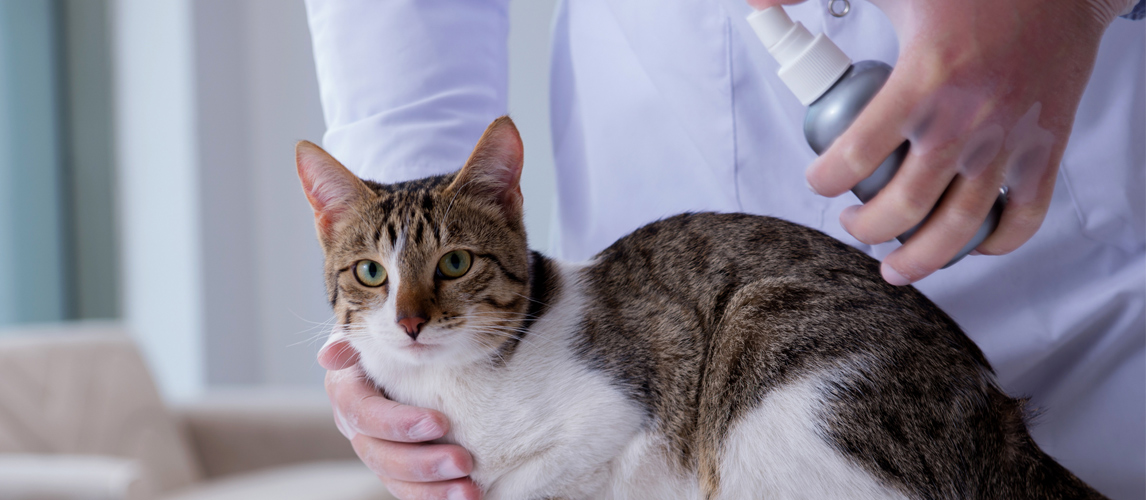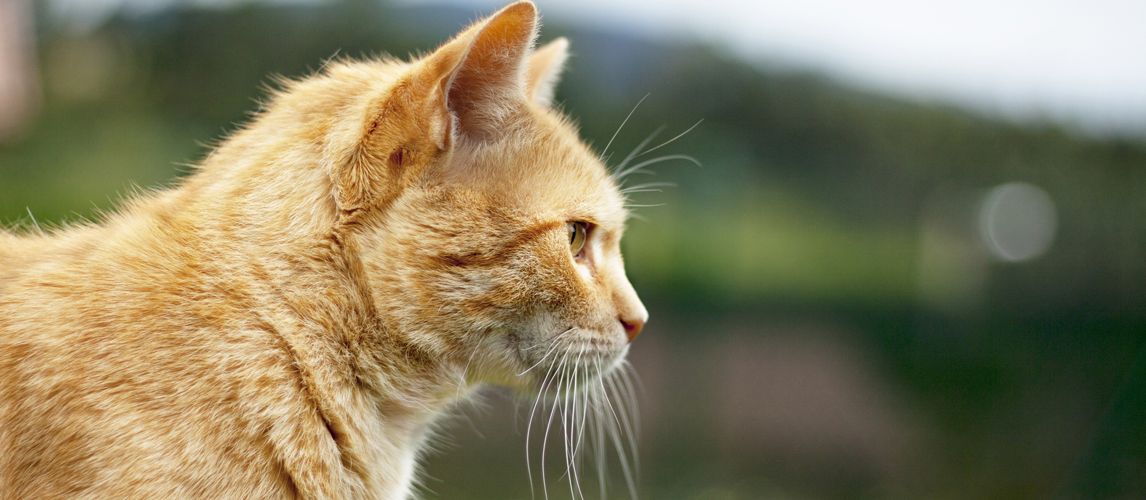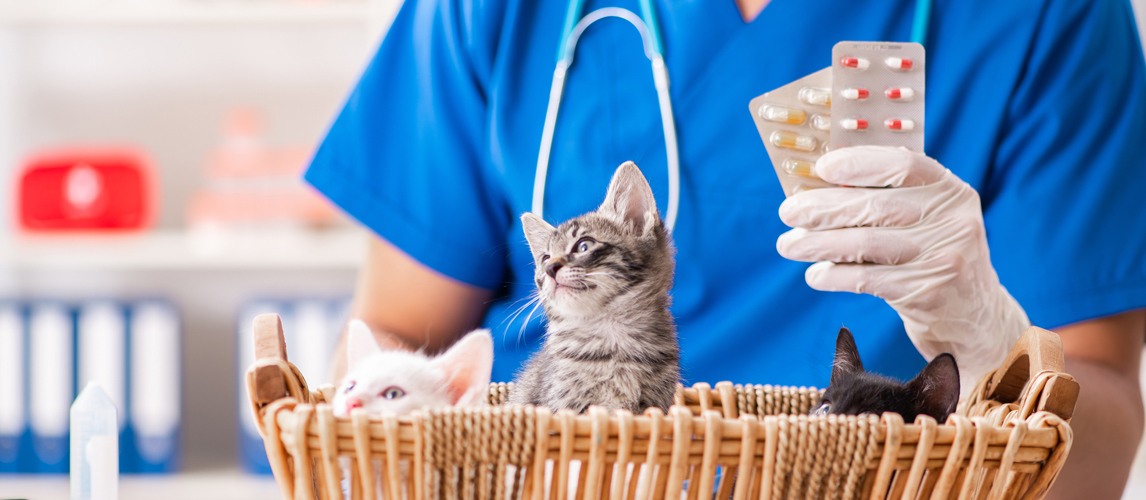According to the Guinness Book of World Records, the oldest cat in the world was called Crème Puff. She was born August 3rd, 1967 and died just a few days after her birthday in 2005, making her 38 years and 3 days old. This, obviously, is not to be expected, so what is the standard life span for a cat? And what can you do to make sure they live as long as they possibly can?
How Old Is Your Cat Really?
The short answer to the question ‘How Long Do Cats Live?’ is 14 years as this is the average age that all breeds and types of cats live to. This is too simplistic, however, because our human perception of ‘years’ and ‘maturity’ has to change when we try to understand our cats’ lives.
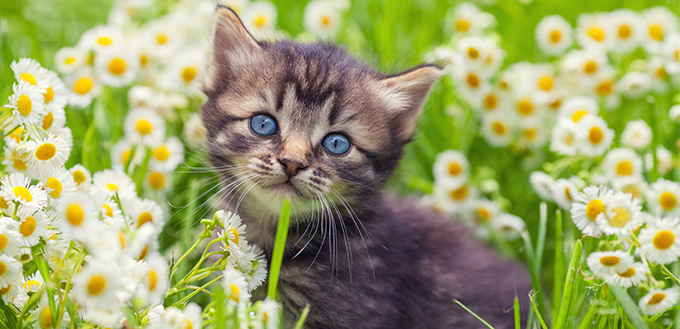
Living 14 years may seem extremely short and sad – to us, they are just teenagers, after all! However, cats mature at a different rate to humans, and so a life span of 14 years old is equivalent to a human who has lived for over 70 years.
Calculating these ‘cat years’ is a similarly complex process as their rate of maturity can speed up, and slow down, relative to humans’. Generally, the first two years of a cat’s life have the fastest rate of maturity and they can be considered the equivalent of 24 years old at the end of their second year. After this, they age approximately 8 years for every one human year and the rate gradually slows until they are aging approximately 4 years for everyone one human year.
If you aren’t sure, check your cat’s age here:
- 0-1 month is 1 cat year
- 3 months is 4 cat years
- 6 months is 10 cat years
- 12 months is 15 cat years
- 2 years is 24 cat years
- 5 years is 36 cat years
- 10 years is 56 cat years
- 15 years is 76 cat years
- 20 years is 96 cat years
Many cats do reach 20 years old, but its important to note that mortality rates are at their highest in the first year, when they are curious and take more risks, and in the 15th and 16th years, once they have entered old age.
Indoors vs Outdoors
Understanding lifespan is also complicated by the variety of cats that exist. The first of the many factors that affect the lifespan of your cats is whether they are indoor or outdoor cats. Defining what an outdoor cat is can be difficult as it can vary from feral cats to cats allowed out with supervision.
Outdoor cats generally have shorter lifespans due to their more dangerous environment. Fully outdoors cats, such as abandoned or feral cats who don’t have owners, can only expect to live until about 5 years of age. Cats who spend a significant proportion of their day outdoors and unsupervised can expect to live for 7 years. The various dangers that impact the lives of outdoor cats include:
- Cars
- Disease
- Human cruelty
- Poisons and toxins
- Other animals
This is not to say that owners who allow their cats outside are wrong. Many vets suggest that indoor cats can feel unfulfilled and less happy than indoor cats due to their considerably less interesting lives. Cats are curious explorers, and so outdoor adventure is a fundamental part of their natural existence. It is also worth noting that many outdoor cats do still manage to live to a similar age as their indoor counterparts, but that outdoor hazards simply bring down the mean average. Ultimately, this is a decision that owners can only make on the advice of their vet, considering the dangers of their local areas and their cat’s personality.
If you are considering making your cat an outdoor cat, it is important to keep their vaccinations up to date. If you are still unsure, there are some compromises you can make if you have the means. You could build a ‘catio’, which is an extensive, but protected, outdoor space for them to explore and play in, or you may consider training your cat to walk on a lease, so you can take them for exploratory walks, much like you would do with a dog.
Colour and Lifespan
A second factor that impacts lifespan can be the color of your cat’s fur and skin. Most standard colors, such as white or brown, don’t make much impact, but rare colors like tortoiseshell cats and calico cats, can have health problems that impact their lifespan.
- Tortoiseshell Cats: More often female, with males being very rare. This means that male tortoiseshells are often sterile and have a number of health issues that can shorten life expectancy.
- Calico Cats: Similarly, calico coloring occurs due to have two X chromosomes. This means male calico cats have XXY chromosomes which are also linked to sterility, health problems and shorter lifespans.
- Black Cats: Despite black cat superstition making them the most frequent residents of shelters, there has been some research that suggests that their skin and hair colour correlates with longevity.
Breed and Lifespan
Put simply, crossbreed cats live 1.5 years longer than purebreds, who live an average of 12.5 years. But even within the breeds, there are slight differences in how long you can expect your cat to live:
- American Shorthair Cat: The longest living cat breed and the most popular in the US, they can often live into their 20s
- Savannah Cats: A new breed with little information, but early studies have suggested they may survive for over 15 years.
- Sphynx Cats: Surprisingly long life, especially for a purebred. Often live for between 10-15 years.
- Siamese Cats: Largely healthy, so their average lifespan is 14.2 years, but could suffer from dental disease, respiratory problems, heart disease and cancer.
- Persian Cats: Despite several hereditary conditions, such as polycystic kidney disease and hypertrophic cardiomyopathy, they live slightly above average at 14.1 years.
- Maine Coon Cats: Below average life spans of 11 years due to several genetic problems, such as hip dysplasia, hypertrophic cardiomyopathy and kidney disease.
- Ragdoll Cats: Lifespans of only 10.1 years on average due to hypertrophic cardiomyopathy
- Bengal Cats: The shortest living cat breed at 7.3 years as a result of hereditary issues like polycystic kidney disease and weaknesses to infections.
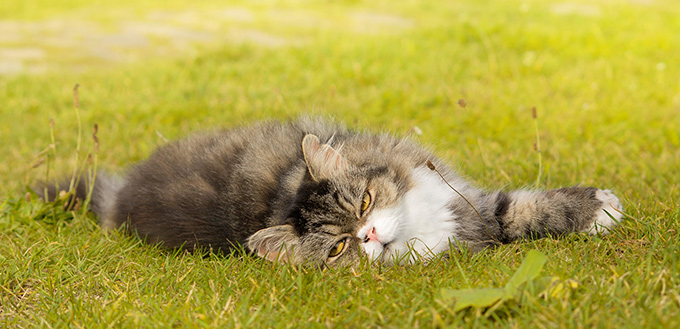
Good News
Not everything is doom and gloom, so don’t despair if you’ve just found out your beloved kitty has less than average life expectancy. The good news is that cats are, on average, living longer lives now than ever before. Much like humans, advances in technology and standards of living have allowed cats to get to older ages and survive all manner of conditions and diseases. These advances include:
- Increased allocation of family funds as cats are seen as irreplaceable members of the family.
- Scientific advances for treating disease, providing medication, and controlling infection.
- Greater access to veterinary care as more vets working on small animals ensures that most people live within a reasonable distance to a vet.
- Increased availability of pet insurance which allows for affordable veterinary care and more regular check-ups.
- A decreasing number of outdoor cats.
Related Post: Best Cat Dewormers
Keeping Them Healthy
While you might not be able to control genetics, you can control how fit and healthy they are so that they can live long and happy lives. Greater access to care has made it easier than ever to ensure your pet has the high standard living they deserve.
The first step to owning a healthy cat is to understand their biology, particularly as they age. For example, the leading cause of death in cats after the age of 5 is kidney disease. While this may be due to hereditary conditions, there are plenty of steps you can take to reduce their chances of succumbing to this problem. You can encourage your pet to drink plenty of fluids, serve wet cat food, and place the litter box in an accessible and comfortable location to encourage regular use.
Similarly, understanding the natural signs of aging in a cat can help you keep them healthy and offer them a high quality of life. Older cats often suffer from:
- Thinner skin which allows for more infections
- Weaker immune systems
- Lower quality of grooming causing matted hair and odour
- Thick and brittle claws
- Hearing loss
- Vulnerability to dental disease
- Less interest in eating due to decreased sense of smell
- Kidney weakened
- Some degeneration of the mind, as demonstrated by some personality changes or disorientation.
Obviously, you want your cat to have a very long and healthy life, through both the difficult, risk-taking early years to the challenging trials of old age vulnerability. The best way to do that is, simply, to keep them healthy, so here are some tips to help you do that:
- Keep your cat indoors if you think they will be at risk outside.
- Groom them regularly so that you notice any physical changes or concerns.
- Stay on top of vaccination and parasite control.
- Visit the vet whenever you think something might be wrong, no matter how small.
- Don’t let your cat gain weight, no matter how cute it may be – every extra kilogram reduces their lifespan by 6 months.
- Be aware of all your household poisons, such as cleaning equipment, and keep it out of reach.
Related Post: Best Cat Food for Weight Loss
Sources:
- How Long Do Cats Live?, Pet Health Network
- Dr. Jennifer Coates, DVM, How Long Do Cats Live?, PetMD


